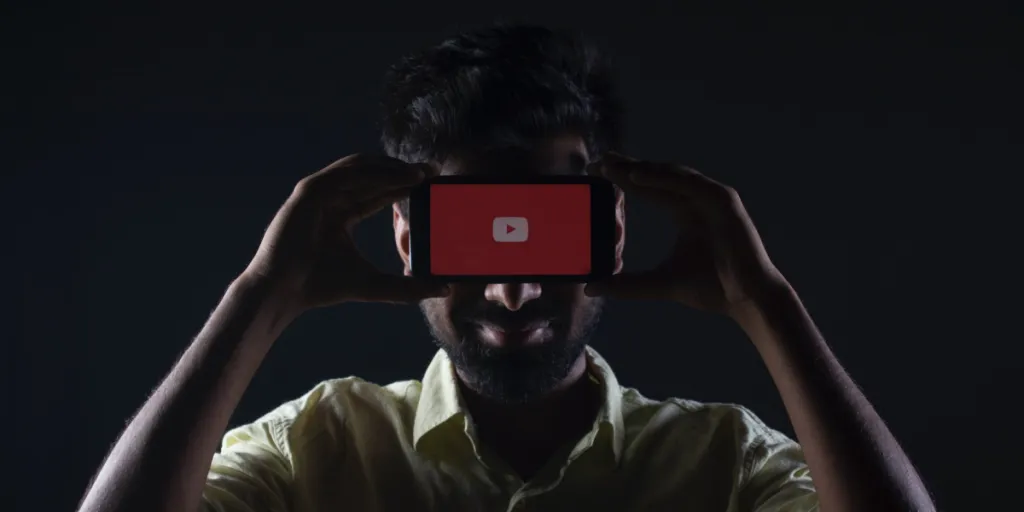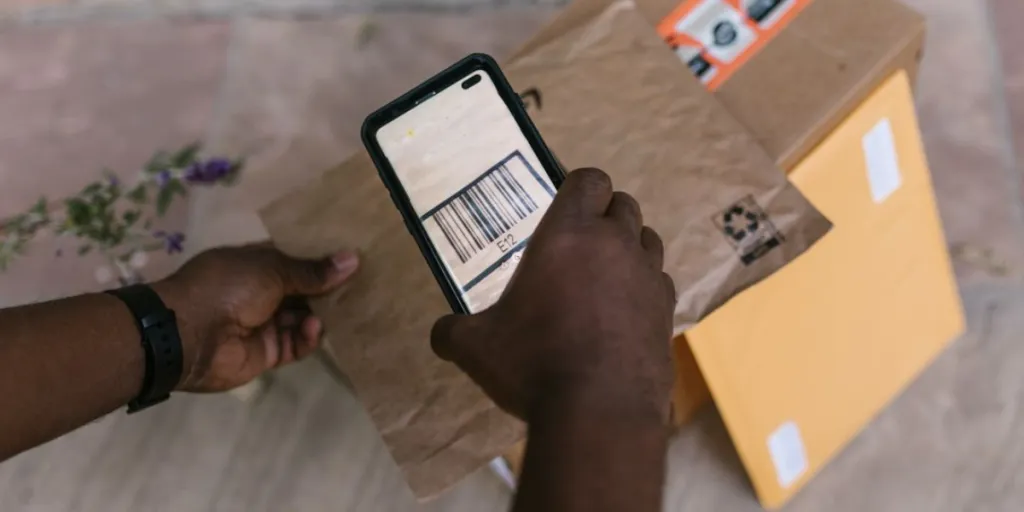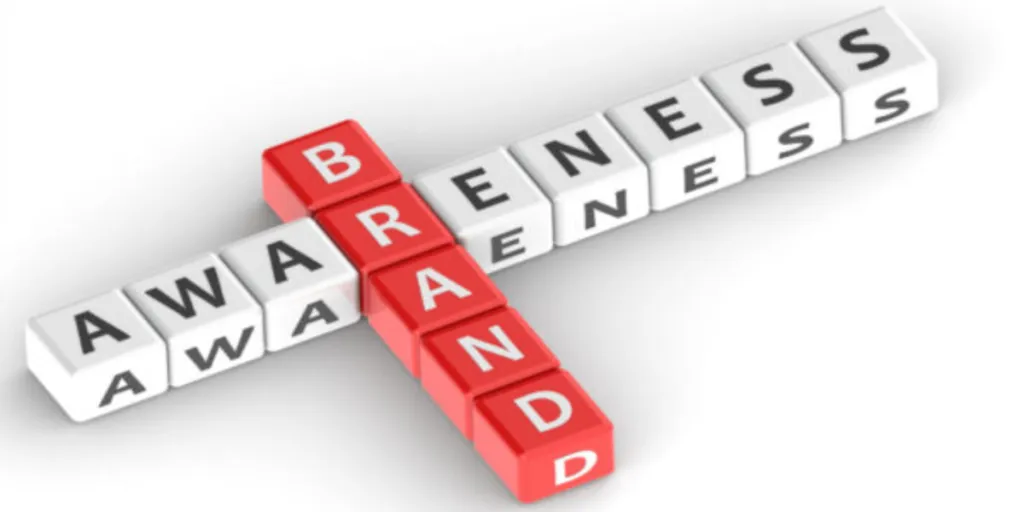Many businesses may see SMS marketing as just another passing trend. But the reality is that SMS is becoming a critical part of omnichannel marketing strategies.
Adding SMS marketing to your email automation workflow may be the best thing you do for your marketing strategy in 2023 and beyond.
Far from a new channel in the digital marketing world, many marketers and online sellers are beginning to adopt SMS as a primary vector in their omnichannel strategies.
Why now? Why SMS?
There are plenty of things that lead to the rise in SMS marketing, and why marketers are now integrating it alongside their email strategies.
In this piece, we’ll explore how the climate between generational adoption of text-based messaging, plus how the climate in the marketing and ecommerce industry paved the way for SMS to take more than a supporting role in omnichannel or multichannel marketing strategies.
Table of Contents
How does SMS fit into omnichannel marketing?
Does SMS live up to expectations?
Tips for using SMS effectively within your email marketing strategy
Key takeaways
How does SMS fit into omnichannel marketing?
SMS marketing opens up new possibilities for connecting with customers across channels. You can use it as part of your omnichannel messaging strategy to reach your customers in a fast, direct, and personal way. Here’s how.
Complement promotional email campaigns
SMS is the perfect way to boost engagement with your regular email newsletters and promotional messages.
Send a text reminder with a link to your latest email offer right before it goes out. Or follow up an email promotion with an SMS containing a reminder, call to action, or coupon code.
Using SMS and email in tandem creates more touchpoints to capture customer attention and drive action.
Update customers with transactional messages
Transacional messages are automated, non-promotional texts.
Such messages contain timely updates and reminders related to transactions. As such, SMS is an ideal channel for sending them.
Automate post-purchase confirmation texts and shipping notifications. This provides value during the ordering process.
Additionally, meet customer expectations for communications around appointments, reservations, and deliveries. You’ll build trust and satisfaction.
SMS adds convenience by keeping customers informed without requiring them to check emails or log into accounts.
Collect more customer feedback
SMS provides a direct channel to request targeted customer feedback.
Send a text message after a purchase asking the customer to review their shopping experience or the product they bought.
You can use feedback over SMS to:
- Understand pain points
- Improve customer satisfaction
- Fine-tune your offerings
- Build brand loyalty
The personalized outreach and simplicity of responding via text often leads to higher response rates. It also gets you more actionable insights.
This makes SMS a fast and convenient way to improve your omnichannel sending strategy.
Build anticipation for special events
Leverage SMS to get customers excited about your upcoming events. These can include product launches, sales events, or celebrations.
Send a series of texts announcing the details, building hype, and prompting engagement. You can even use SMS to send reminders, countdowns, and exclusive offers related to the event.
How might you celebrate your brand’s anniversary via SMS campaigns? Include sneak peeks, contests, and limited offers.
Drive awareness of special events through SMS. It gets customers involved and looking forward to your announcements.
Want more tips and hacks for leveraging SMS marketing to grow your business? Check out this video tutorial. It covers everything from integrating your email lists to driving sales through SMS campaigns.
Does SMS live up to expectations?
It’s easy to be hesitant when a new channel, or a recently reinvigorated channel, emerges on the market—especially when the industry moves quickly, like in ecommerce and digital marketing.
With that said, there are clear signs that the SMS boom has longevity.
A look into the data surrounding SMS marketing shows that there are clear benefits to not only using this channel, but combining it with existing channels to provide more value.
The benefits of SMS marketing: Key statistics
It’s no secret that SMS grabs attention from your customers. In fact, open rates for SMS can be as high as 98%. Compared to the 18.55% average open rate for email in ecommerce, this is a huge difference.
It wasn’t just open rates that are higher with SMS—in the first half of 2023, Omnisend merchants saw a 16.9% increase in SMS-driven orders compared to the same period last year.
What’s more, customers are rapidly adopting and accepting this channel as well: 48% of consumers prefer receiving brand updates from SMS (the top channel among email, app notifications, and direct mail).

Phillip Jackson commented on the rapid adoption of SMS as a marketing channel, both from consumers and marketers:
Is it a viable channel? Yes. Is it working? Yes. I’ve never seen a more rapid adoption of a new channel. Ever. There’s an explosion of SMS in the market and it seems to come at the same time as consumers began to accept SMS as a form of contact from brands too.
Normally, the next trend tends to be out of line with consumer adoption across the board. But it seems like SMS is connecting with customers, and they’re even favoring it. It’s pretty impressive.
Phillip Jackson, Something Digital
Does this mean you should forego all other channels in favor of SMS?
Absolutely not.
In fact, there’s a much better case for simply integrating SMS within your existing email automation workflows. Throwing yourself into only one channel means putting all of your eggs in one basket, and not fulfilling the full potential of what your channels can do together.
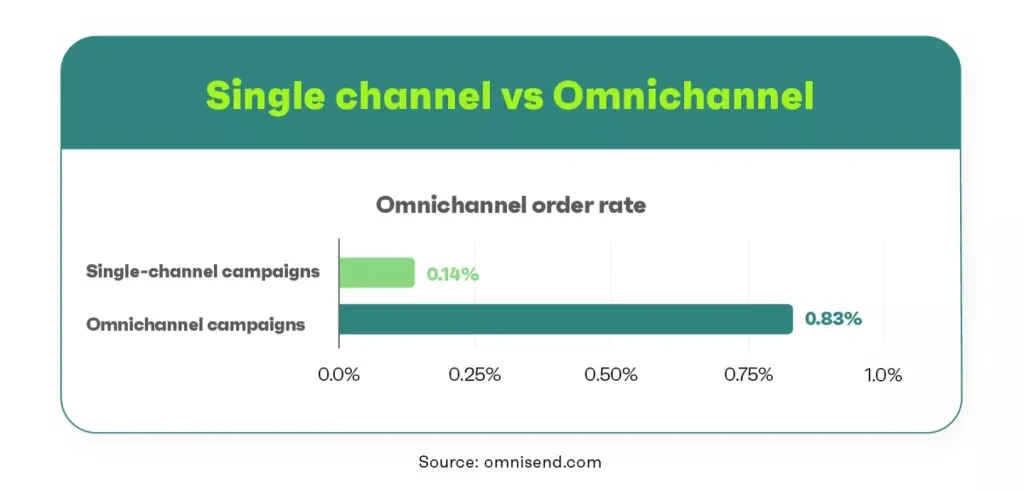
In fact, we have found that omnichannel campaigns utilizing 3 or more channels earned a 494% higher purchase rate than single-channel campaigns. While most of the single-channel campaigns were solely email, it’s clear that shoppers prefer consistent communication across several channels that are relevant to them.
While email marketing is certainly relevant to the vast majority of ecommerce shoppers today, SMS has a huge impact on conversion rates when it’s combined with email. We found that of those campaigns, those that involved SMS were 429% more likely to convert than those that didn’t.
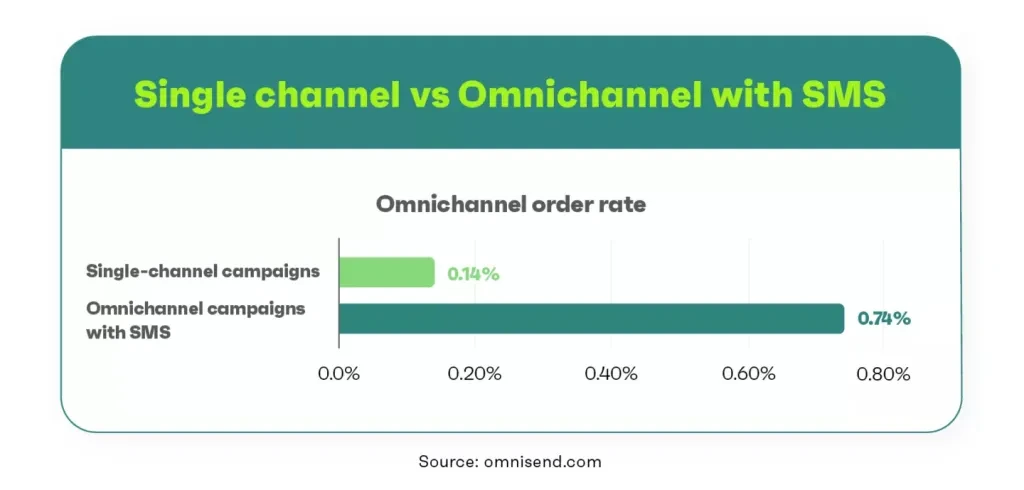
At the end of the day, SMS is not a channel that’s well-adapted to each and every situation, like email is. This still means that email is an indispensable tool for your marketing strategy.
However, adding SMS at critical moments of the communication flow can dramatically improve your purchase rate, as seen above.
Chloë Thomas reinforced the need to consider making SMS one the top priorities this year:
SMS has long been a channel of consideration – one that sits on the “maybe list” each time the marketing planning process is underway. I think it’s now time for it to be moved to the “must test” list. Consumers are increasingly used to getting SMS from businesses – so the fear of annoying customers by sending SMS should no longer stop anyone from testing it.
Chloë Thomas, Ecommerce Masterplan
As she mentioned, SMS has long been on the radar for many savvy marketers, but today, we can no longer ignore the impact SMS marketing can have on an automation workflow.
Founder of Nadimo and popular industry podcast Ecommerce AllStars, Branden Moskwa, agreed, sharing some of his own experience in the demand for SMS marketing with his clients and affiliates:
We have built an affiliate platform for a client and one of the main components we needed to build into it was the capability for one click sms marketing. We saw a significant increase in those using the SMS function.
It is my belief that SMS Marketing will not only rise but become as commonplace as email marketing in the near future. With everyone on their phones it has become the go-to form of communication. We have seen a rise in the sheer volume of client requests to integrate SMS into their marketing communications.
Branden Moskwa, Nadimo and Ecommerce AllStars
While this demand is important to note, it’s also critical to consider that SMS will be fulfilling different things than email marketing. Where SMS falls short, email will fill the needs marketers have in communicating with customers, and vice versa.
SMS challenges to consider (And pitfalls to avoid)
Like any marketing channel, SMS has its challenges. While we’ve highlighted a lot of the pros to working with SMS, this channel comes with unique challenges.
SMS messages can feel invasive if not sent properly
As previously mentioned, SMS is an intimate channel. It offers a level of proximity that other channels can’t necessarily achieve because you’re able to send a direct message to your customer wherever they are, no matter what they’re doing.
And chances are, that message will be seen immediately.
Be wise with the way you start a conversation with SMS, because it will set the stage for how your customer views communicating with you via this valuable channel. Sending an SMS campaign for everything means your customer will feel their privacy has been invaded.
In an interview with Phillip Jackson, he weighed in on his experience with SMS from a consumer standpoint. Explaining how a brand he values lead the conversation on SMS via transactional updates, he commented:
I got a text after my recent purchase with a brand, just a simple, “Hey your order’s been shipped.” Those little one-off texts are so appreciated, and they make me so much more susceptible to getting unsolicited marketing messages from them. When I do get a promotional message, which is rare, it’s such a delight.
On the flip side, with another brand I purchased from, I never received any transactional SMS from them. One day, I randomly got a promotional text from them with a new product that had nothing to do with what I’d originally purchased. It felt so random.
Start the conversation with an opt-in or a transaction, then continue the conversation with your promotion. But don’t start the conversation with a promotion, because you haven’t created that connection yet.
Phillip Jackson, Something Digital
Earn your customer’s trust and build a relationship with them by making sure that your SMS campaigns are important and relevant.
Branden Moskwa, echoed this advice, stating:
When you are able to tap into the preferred form of regular conversation you increase your chances of success substantially. Keep in mind, as with any other form of marketing, if it’s perceived as SPAM or the message is not correctly targeted, you will turn people off of your brand potentially quicker than other forms.
Branden Moska, Nadimo & Ecommerce AllStars
SMS imposes strict character restrictions
With a 160-character limit, your important message needs to be concise. While this isn’t necessarily a bad thing per se, it means that you won’t be able to add a lot of details to your message.
This is why including a link to a page with more information may make the most sense when sending an SMS with critical updates — or better yet, sending a follow-up email offering more information can create the perfect 1-2 punch.
For example, if you’re sending an SMS in a post-purchase automation workflow for shipping confirmation, you might start with something that looks like this.
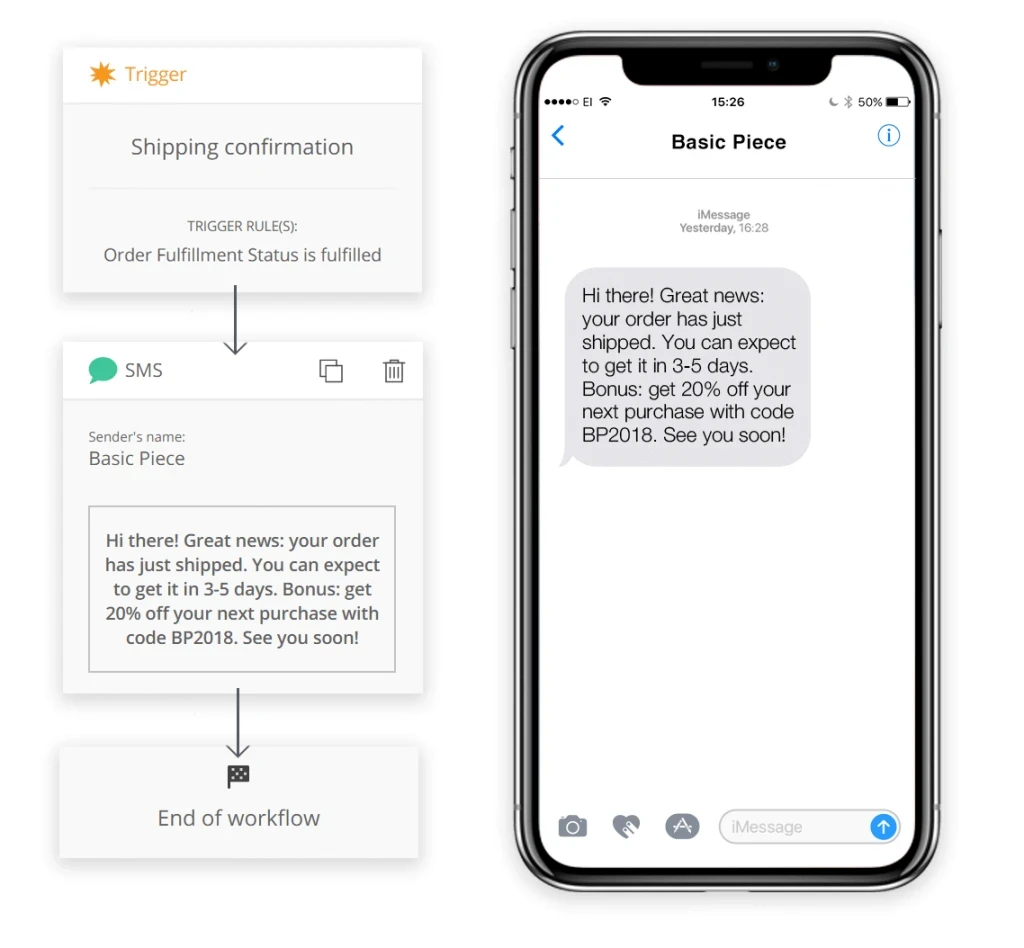
From here, you would simply add your normal email for shipping confirmation to the same workflow (with or without delay) to give your customer the critical information they need, like a tracking link, a recap of their order with pricing and returns information, etc.
These are elements that are paramount to any post-purchase communication, and they just won’t fit into a traditional SMS message.
That’s what your email follow-up is for.
What you can do is either have a link to the customer’s account in the SMS, or you can say “Check your email for more info.”
No matter what, make sure that you’re using SMS when it counts: the last thing you want to do is burn your contacts out with SMS spam.
Which brings me to my next point:
SMS has been cost-prohibitive in the past
Depending on the SMS marketing provider you use, and where you need to send your SMS campaigns, the channel can vary in cost.
Some companies will charge a flat fee for sending SMS campaigns plus the price per SMS, which will depend on the country, but can range between $0.01 and $0.05 per message.
However, these cost barriers have been mostly removed in recent years.
In light of the boom in SMS marketing, some SMS providers are lowering their prices and others are even offering free SMS credits to help ecommerce marketers add the channel to their email marketing strategies at no risk.
While challenges exist within any marketing channel, these challenges shouldn’t dissuade you from adding it to your marketing workflows. If anything, they should act as a guiding light to help you maintain best practices when using SMS marketing.
Tips for using SMS effectively within your email marketing strategy
There are clear best practices for SMS marketing that will determine whether your campaign flies or fails. Follow these tips to assure maximum results from your next campaign:
Start the conversation via opt-in and transactional text messaging: You don’t want to send an SMS campaign to your customers out of the blue, especially if you’ve never sent them a message before. Even if you have permission to do so, introduce your customer to SMS via an opt-in or a transactional message to start the conversation. Then move towards promotion once you’ve opened that door.
Make sure that you’ve got a good reason to send an SMS: If you’re sending a direct notification to a customer’s phone, you’d better have a good reason. The key to making sure a customer will be receptive to your offer is by making sure it’s relevant. Keep your text messages limited in frequency, and make sure that you’re always adding value to your customer’s experience with your brand to maintain your relationship.
Keep your message short, sweet, and to the point: No one has time for long messages, and you don’t have the character space for them! Make sure you get straight to the point with your SMS campaign, and give your customer the relevant information they need.
Always offer an out: By law in most countries, and by best practice in general, always offer your customer a way to opt-out from further messages, just like the unsubscribe link in emails. It does you no good to send SMS campaigns to those who will view them as a nuisance.
Think about geography and timing: If you’re sending SMS campaigns cross-border, this is definitely something to take into account. While most people may not have notification alerts for their email accounts enabled, they certainly will for SMS. There’s no better way to kill a customer relationship than to wake them up at 3 a.m. with a promotional text message.
Combine SMS with email and other channels for maximum impact: Given that you should keep SMS campaigns only for the most important and relevant messages, other channels will need to be used to maintain your brand’s relationship with your customers. Combining SMS with email and other channels will help you not only maintain that contact, but avoid the temptation of over-using SMS.
Rytis Lauris, Omnisend co-founder and CEO had this to say:
SMS can be a powerful channel when used properly, but it can’t do it alone. No channel can do it all alone. Each channel you use in your marketing strategy serves a specific purpose, and SMS is no different. While SMS might fulfill certain needs that email can’t, it can’t replace email completely. The best way to succeed? Use SMS alongside your email automations to increase conversions from your entire omnichannel workflow.
Rytis Lauris, Omnisend
Key takeaways
SMS marketing could be the best thing you add to your ecommerce marketing strategy this year. With the right tactics in place, the right practices, and targeting the right customers, you could see significant benefits to combining it with email.
Key Takeaways for SMS Marketing:
- Use SMS with email to improve conversion rates from your automation workflows by leveraging the timeliness of SMS and the added dynamic content of email.
- Customers are adopting SMS as a marketing channel just as much as marketers are, so don’t be afraid to use it if you do it properly.
- SMS works well for any demographic, and is especially successful with anyone under the age of 40, SMS is a great channel to natively communicate with customers where they spend the most time.
- Be sure to use SMS marketing when it really counts. Sending for irrelevant or non-timely reasons will earn you nothing but opt-outs.
We expect SMS to evolve as a marketing channel over the next few months, and further earn its place alongside email as a key channel in the majority of online marketers’ digital strategies.
Source from Omnisend
Disclaimer: The information set forth above is provided by Omnisend independently of Alibaba.com. Alibaba.com makes no representation and warranties as to the quality and reliability of the seller and products.

